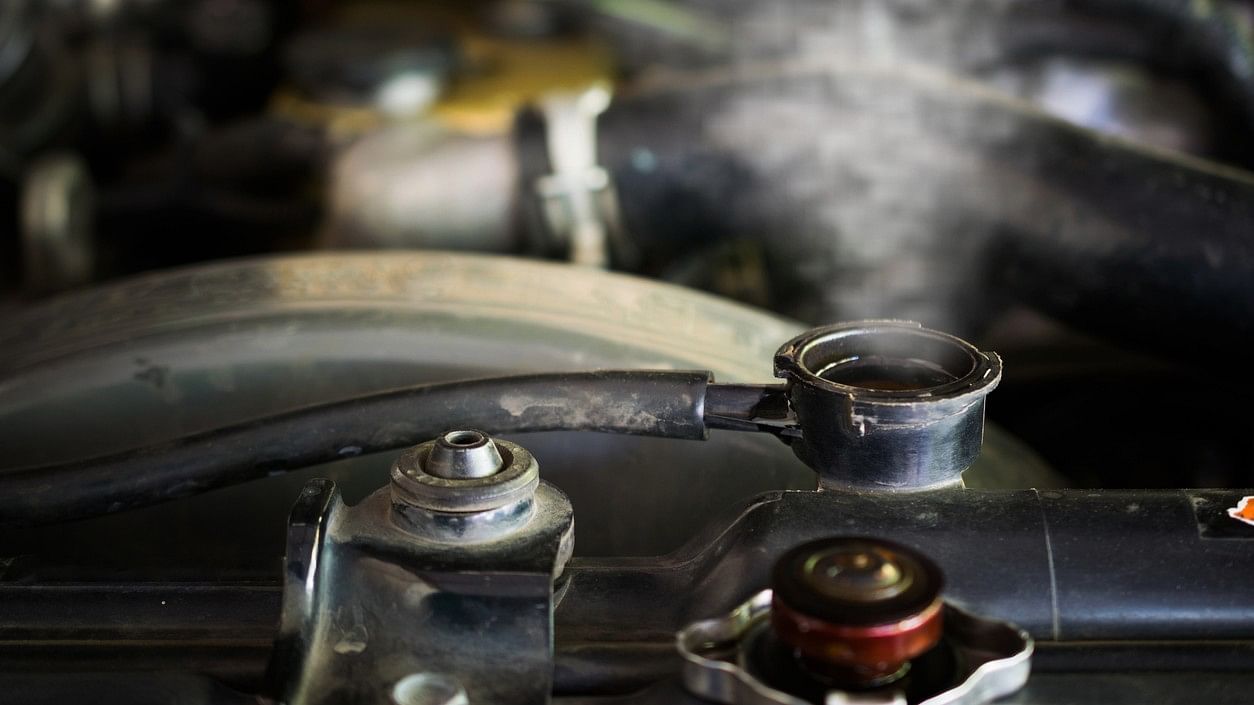
Representative image of a car engine.
Credit: iStock Photo
New Delhi: Resolving a 200-year-old challenge, Bengaluru physicists have developed a “heat engine” that generates high-power with high-efficiency, overcoming a “trade-off” associated with all types of engines, from cars and aeroplanes to nuclear reactors.
The path-breaking discovery from researchers at the Indian Institute of Sciences and Jawaharlal Nehru Centre for Advanced Scientific Research opens up the door to design fundamentally new engines using the novel concept, and can be translated into developing tiny microscopic engines for targeted drug delivery inside cells.
“This is a conceptual breakthrough that opens up many new doors. It is the beginning of a fresh journey. What was thought impossible, has been achieved,” Ajay Sood, Principal Scientific Advisor to the Union government and a co-author of the study, told DH.
In 1824, French engineer Nicolas Leonard Sadi Carnot – known as the father of thermodynamics – proposed what is known as the Carnot engine, the most efficient engine which is theoretically possible. It was a part of his theory on heat engines.
Heat engines are ubiquitous as they lie at the core of cars, aircraft, refrigerators, power plants and miniature motors. But they are currently limited by Carnot's maximum efficiency rule, according to which any attempt to enhance a heat engine's efficiency lowers its power, making the engine useless.
For the last two centuries, all the engines manufactured in the world follow the principles laid down by Carnot. But because of such a trade-off between power and efficiency, a Carnot heat engine was never made.
Take the example of a racing motor-bike, which requires you to pick up speed in a very short time. Their engines produce high power but are not fuel-efficient. In comparison, the regular family motorbikes are more fuel efficient, but they can’t generate such high power.
“Since a zero-power engine is useless, everyone accepts the power-efficiency trade-off like a law. More efficiency will mean lower power and vice versa. It has never been overcome and everyone thought it can’t be done till now,” said Rajesh Ganapathy, a senior scientist at JNCASR and one of the co-authors of the study.
Sood, his student Sudeesh Krishnamurthy, who is now at the University of California, Berkley and Ganapathy carried out a series of ultra-precise experiments in the laboratory using a tiny heat engine made out of a single colloidal particle having a dimension of one-hundredth of a human hair.
The microscopic engine was exposed to a rapidly-fluctuating electrical field, because of which the engine’s efficiency reached close to the Carnot’s limit.
“The micro heat engine built by Krishnamurty operates at the Carnot efficiency at small durations of the engine cycle, and this is the regime of practical interest for extracting useful power output from any heat engine,” said Ganapathy.
“We have demonstrated that it is possible to achieve high-efficiency and high-power together,” added Sood, who is also a professor at IISc.
The scientists made it clear that the outcome of the tabletop experiment – published in Nature Communications on Friday – will not straight-way lead to high-power, high-efficiency engines for the macro-world such as those used in automobiles. “But others may learn from our work and devise different protocols for such macro-engines,” said Sood.
A more immediate translation could be developing micro or nano-scale engines to deliver a cargo inside a cell, such as targeted therapies for cancer. “At least a blueprint is available now,” said Ganapathy.
